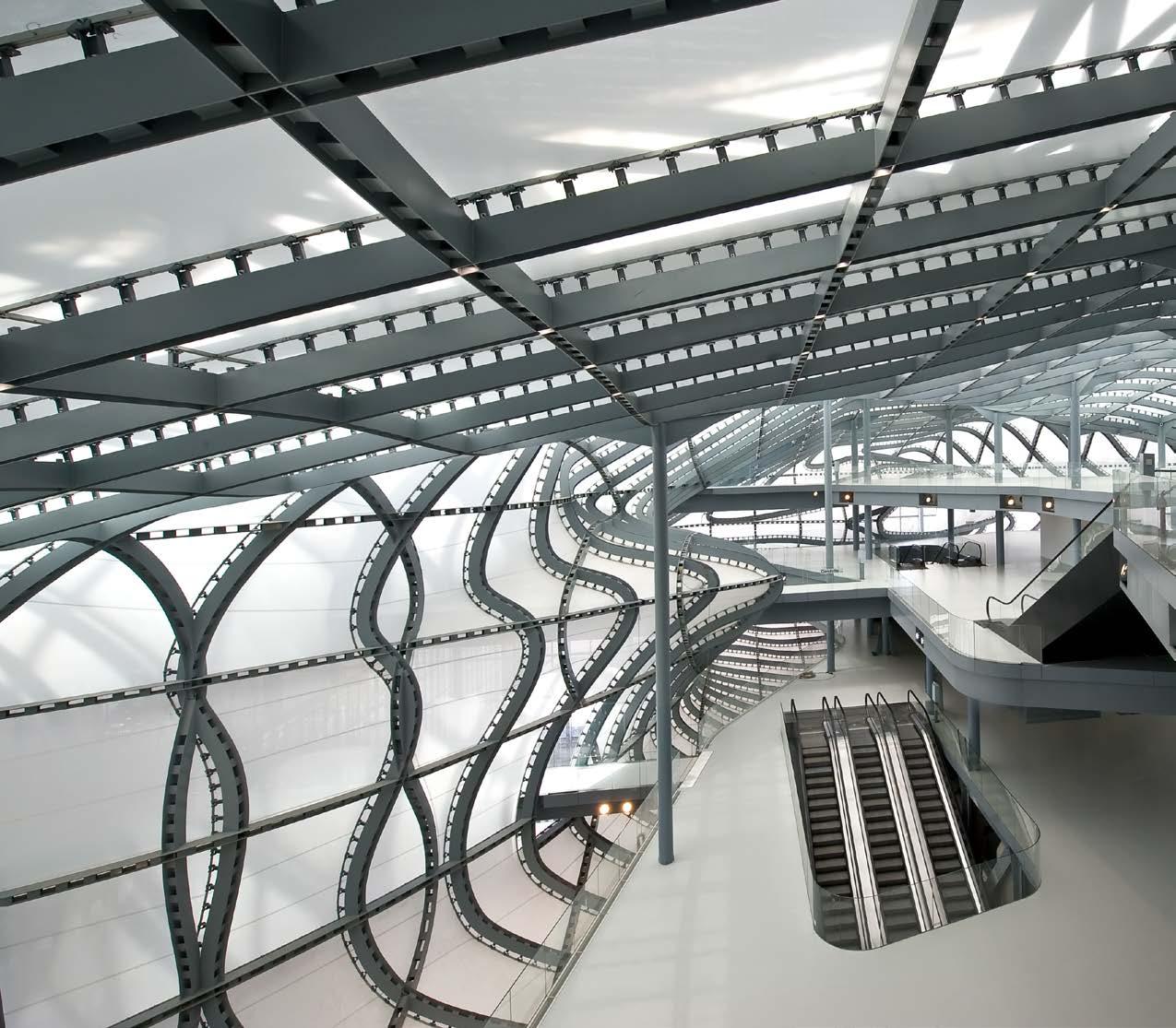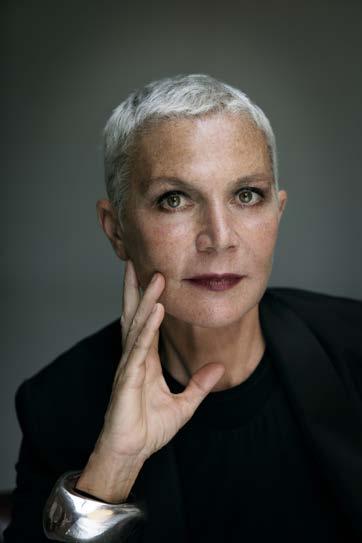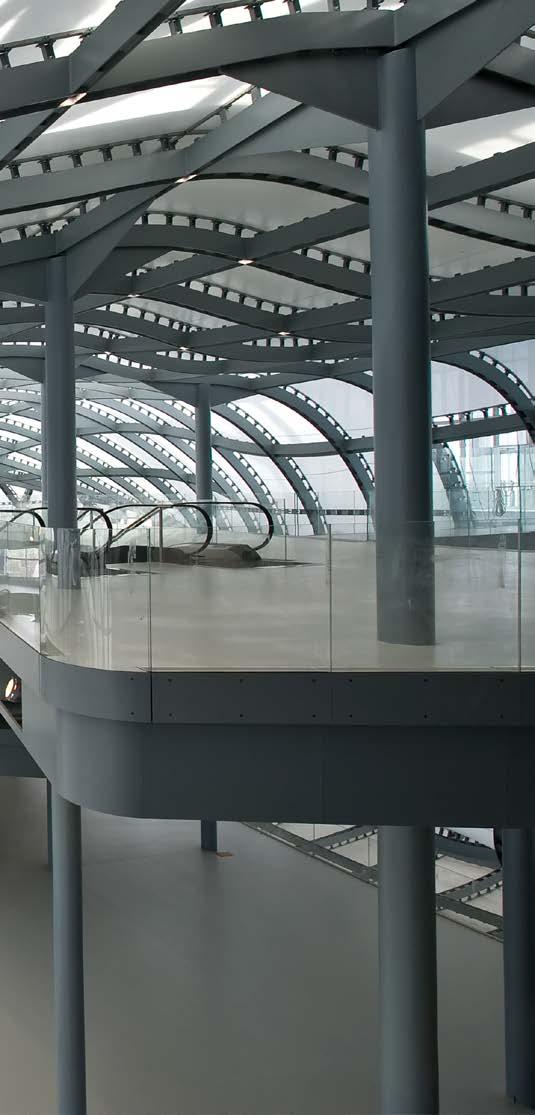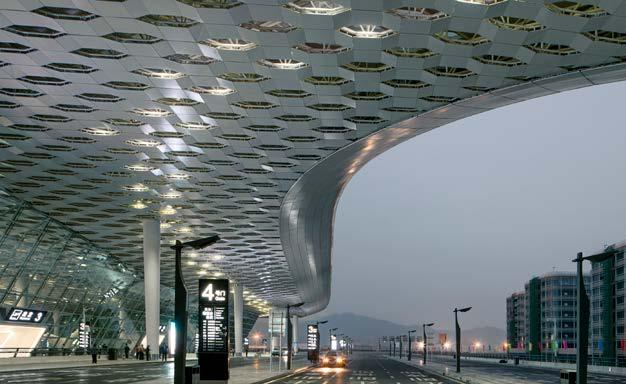
5 minute read
Doriana Mandrelli Fuksas
from Atelier No_10
by Union Print
Emotion in Architecture
Doriana Mandrelli, a wife, a mentor and an architect of undoubted greatness and a true icon in the industry. Her works plays on a very fine line which distinguishes what is traditional and logical from what may be regarded as nonconformist and unconventional. Doriana's work avoids straight-jackets, thus often lacking a common style. Indeed, every project has its own identity based on its surroundings, moods and other key factors. It is by no coincidence that Doriana has received several prestigious awards including; “Officier de l’Ordre des Arts et des Lettres de la
Advertisement
République Française”, and “Commandeur de l’Ordre des Arts et des Lettres de la
République Française” among others. Doriana shared with Atelier, her thoughts the industry, the role emotion plays in architecture and her plans for the future.


Rome - EUR Convention Center The Cloud © Moreno Maggi
DORIANA MANDRELLI INTERVIEW WITH FUKSAS
What is your goal as an architect?
I believe that architecture needs to consider innovation in all fields: digital, infrastructural, technical, and artistic. Including continuous research and investigation in our projects has always been one of my main goals as an architect. I think that in the creative process it is fundamental to transform the results of that research into an effective response for the users, especially in this historical moment. Our work has always been committed to designing buildings for people, buildings to be inhabited, through a constant experimentation and continuous research to build a simpler and smarter architecture.
In what way does emotions play a key role in architecture?
Architecture is made up of emotions, designing a new building, a landscape, or even an object, is a creative process that always needs to consider the emotional feeling we want to communicate to the users that, we don’t have to forget, is the human being. This is the reason why the context, the tradition, the cultural environment of an intervention site is the fundamental starting point to develop an architectural project. Architecture is an act of love and it is born from the emotion the site communicates us.

You have often noted that you try not to have a style. Why?
I believe every project is unique and is born with its own story. Therefore, it is impossible for me to label myself in a style: each project is different and has its own specific context and background. Nestled in these influences, the building is a response to its surroundings and one defined style cannot be adapted to all the diverse range of site conditions. We try to constantly research and think about the future, with every new project we work on, changing and experimenting everyday. We use new materials and also rediscover the properties of the classic ones through the details.
In what way can architecture help you better understand society?
There is a sentence that can explain our tought: Città, LESS AESTHETICS, MORE ETHICS. This was the theme of the 7th International Architecture Exhibition of the 2000 Biennale di Venezia, curated by Fuksas Architects.
Architecture detectes and develops the needs of the society, of people. It is a discipline through which we really understand the needs of the community and we can concretely respond creating spaces to increase their life quality.
What would you call the era in which we now live from an architectural point of view?
I think this is really the beginning of the 3rd Millennium. We have all discovered ourselves unprepared to face this pandemic, finding our houses inadequate for our needs and activities. Us architects should all start reflecting on how new buildings and existing ones must be equipped to respond of the new home-activities we discovered during this pandemic.
What are your views on sustainability? How does it fit in your work?
It is fundamental to integrate into new buildings technologically innovative solutions to minimize the environmental impact; our work is focused on this perspective from the earliest design stage. Through the in-depth study of the intervention site we design buildings that maximize their efficiency, integrated into the built context. Orientation, highly sustainable energy production systems, public greenery integrated into the built space, new technology plant systems and enhanced pedestrian and bicycle mobility are the objectives of our urban projects. Our cities must respond with new architecture to the messages of help that the planet keeps sending us.
In a recent interview you noted, “I don’t think it’s useful to look at what other people are doing. It’s better to observe things that are not strictly connected with your world.” Can you elaborate on that?
Our work aims at understanding facts, context, culture and identifying problems, there is no need to look at what others are doing. We need to find through our designs the best solutions through research, innovation and technology always working in a multidisciplinary environment. Everyone has a different way to look at the reality, this is important.


What effect is the COVID-19 pandemic having on architecture?
The world of architecture will surely have to keep up with the enormous change, primarily social, that this emergency has led to. The role of the designerarchitect can only adapt to the new challenges, using technological innovation to design objects and buildings that adapt to the new way of living, probably different from what we were used to. The house should be a sort of first aid, where we can protect ourselves, where we can not only sleep, but also work, in complete safety.
In a way the lockdown has been an opportunity to think and reflect; seeing what was happening in Italy and around the world at the beginning of the emergency, we started to think about the house and its need to be equipped as the first presidium for the protection of our health. We built up a multidisciplinary group with doctors, computer scientists, architects with whom we have proposed possible guidelines to be applied in the construction of the house of the future, also for a more sustainable lifestyle.
What legacy do you want to leave behind?
Well, the buildings me and Massimiliano designed during our career, that’s my legacy.
What would be your advice to aspiring architects?
My advice is to always keep up to date, never stop studying and be curious with an open-minded 360 degree view, to look not only at the present, but also at the future. For young women architects, I recommend to always follow their own path, to preserve their femininity without trying to imitate men.







